The ACE Study
In the early 1990s, Dr. Robert Anda, then an epidemiologist for the Centers for Disease Control and Prevention (CDC), collaborated with Vincent Felitti, MD, at Kaiser Permanente to investigate child abuse as an underlying cause of medical, social, and public health problems. This effort led to a large-scale study funded by the CDC to track the effects of childhood trauma on health throughout the lifespan. Called the Adverse Childhood Experiences Study (ACE Study), the findings were reported in more than 70 publications in major medical and public health journals. Data collected from more than 17,000 patients showed that ACEs:
- Were common, with 28 percent of study participants reporting physical abuse, 21 percent reporting sexual abuse, and many reporting that they experienced a divorce, parental separation, or having a parent with a mental and/or substance use disorder.
- Had a profound negative effect on health and well-being, including significant increases in alcoholism, heart disease, and cancer.
- Were a prime factor of past, current and future health behaviors, social problems, and early death in the study population. Examples include an increase in the rates of obesity, drug abuse, smoking, chronic depression, and attempted suicide.
Graphics and data below sourced from ACE Interface, LLC.
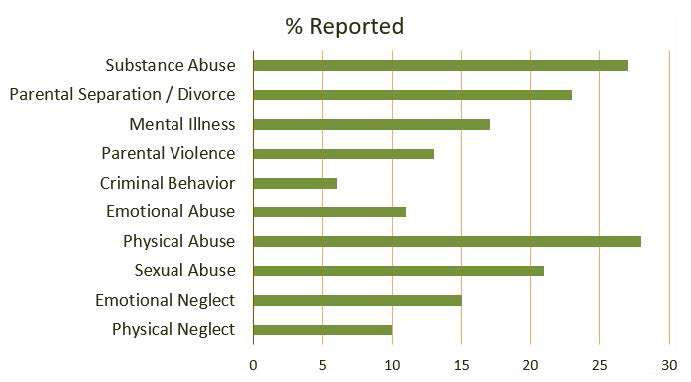
ACEs are Prevalent
A 1998 study by Dr. Rob Anda and Dr. Vince Felitti with Kaiser Permanente patients, mostly white, middle-class, college-educated found that Adverse Childhood Experiences (ACEs) were very prevalent. More than 1 in 4 grew up in homes with substance abuse, over 1 in 4 reported being physically abused and more than 1 in 5 had been sexually abused.
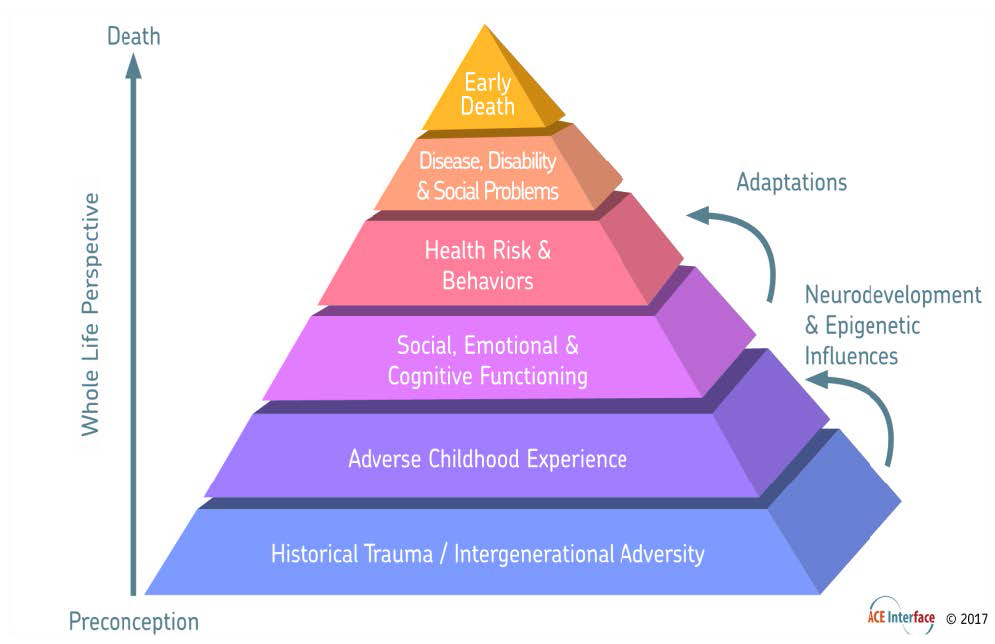
ACEs are a Root Cause of Health and Disease Risk Factors
Continuing research in neuroscience and epigenetics has made it clear that ACEs have a neurological impact, often across generations. This impacts health outcomes throughout the life cycle and is a root cause of many adult health issues.
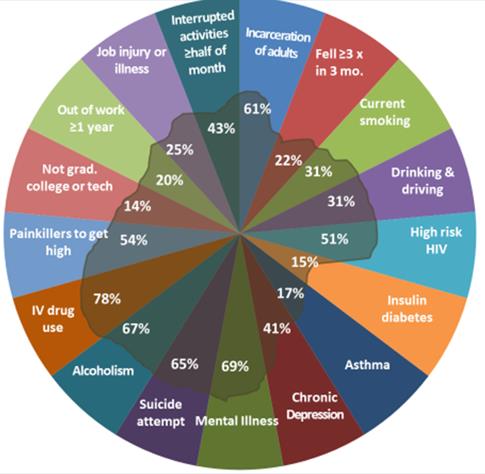
ACEs Contribute to Many Different Health Issues.
The “Population Attributable Risk” of ACEs is very high, indicating that many health challenges are directly impacted by ACEs. For example, 78% of IV drug use can be attributed to higher levels of ACEs as well as 67% of risk factors for alcoholism, 65% of the risk for suicide and so on. The chart at left indicates risk levels attributable to ACEs. By addressing ACEs we reduce the overall risk for each of these issues improving overall health outcomes in many areas of health.
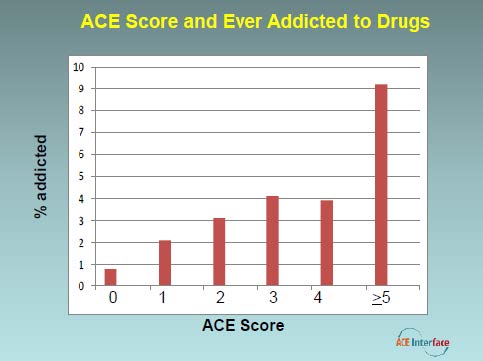
The “ACE Score”
Is the number of ACEs a person experienced. The ACE Score serves as a proxy for the level of adversity and has a “dose” relationship to adult health issues: The higher the ACE score, the more likely a person is to experience serious health challenges. Individuals with ACE scores of 4 or more were 12 times more likely to have attempted suicide, 7 times more likely to be alcoholic, and 10 times more likely to have injected street drugs. People with ACE scores of 6 and higher have an almost 20‐year shortening of lifespan.
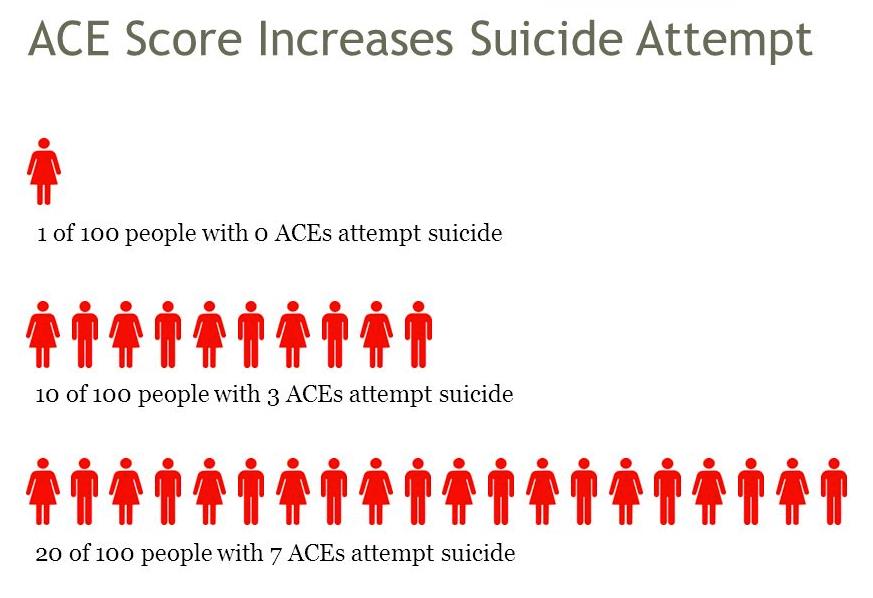
Addiction and suicide
Are two of the health issues that are most highly correlated with high ACE scores.
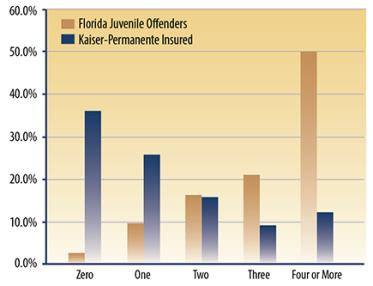
“At Risk” Populations have Higher ACE Scores.
Individuals in high-risk groups have significantly higher ACE scores than in the original Kaiser Study. In one Florida study of juvenile offenders, 50% had ACE scores of 4 or more, meaning that they had experienced high levels of adversity presumably contributing to their behavioral health risks.
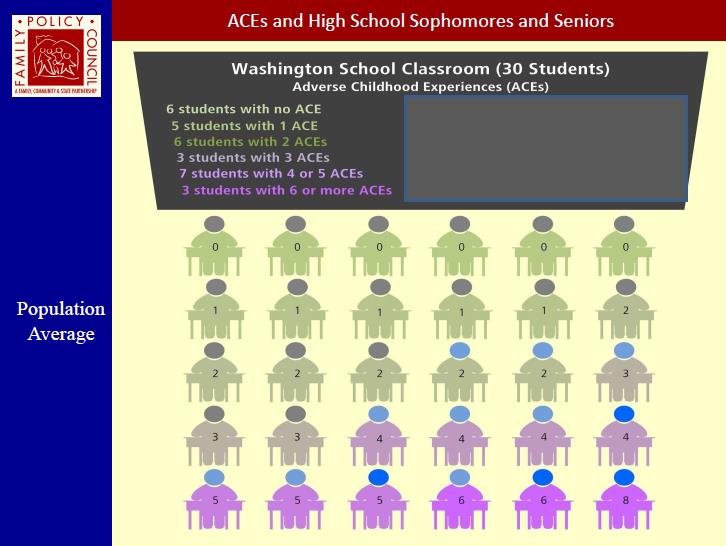
Large Numbers of Students Affected by ACEs.
For schools, these findings mean that every classroom will have many students affected by ACEs and a few who reflect very high ACE scores.